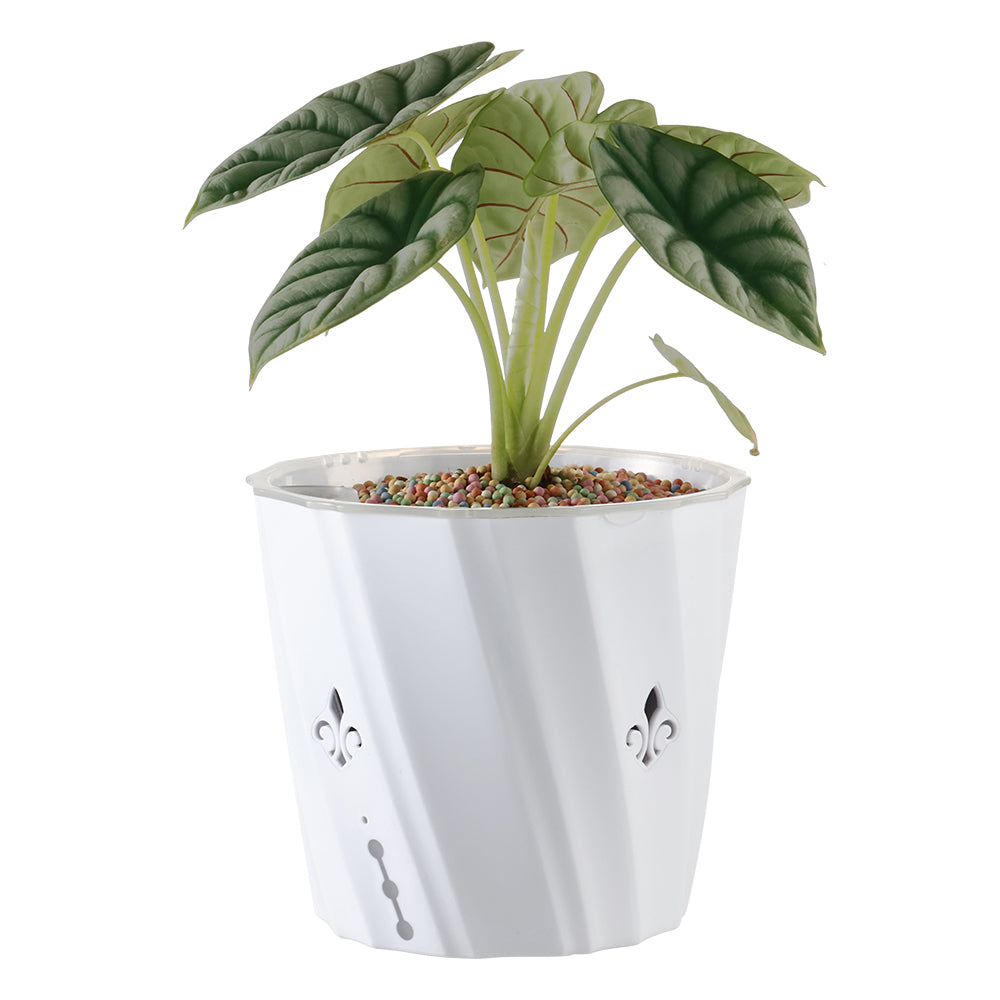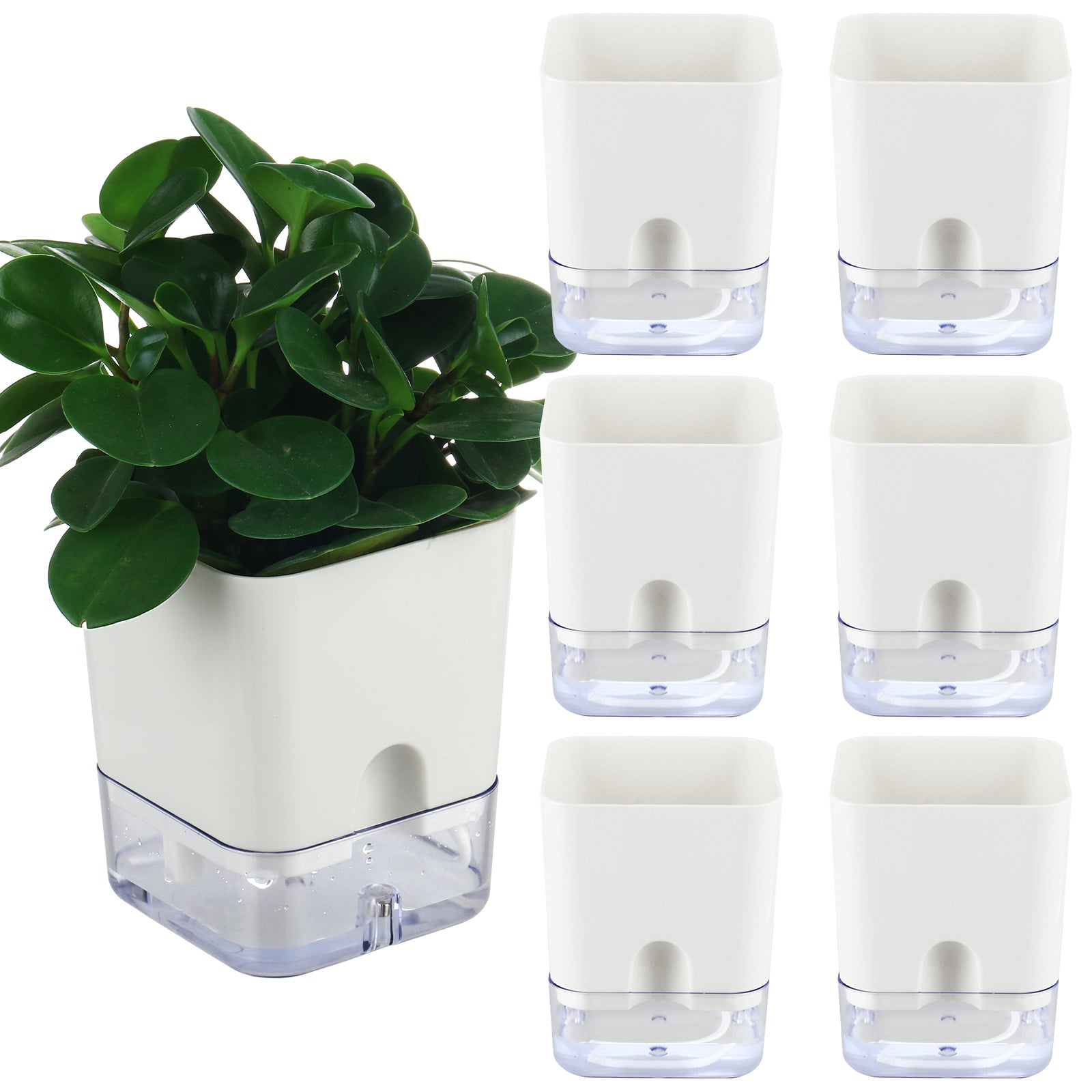Snake Plant Brown Tips and How to Fix Them
The snake plant is one of the most beautiful house plants. But, this plant can also be very vicious. Snake Plant brown tips are a common problem for most new snake plant owners.
It can occur because of over & low watering, Heat and direct sunlight in excess, or Fertilizer overuse. Some plants will recover from this condition very well, but some are so severe that the entire plant dies.
Do you have problems with brown tips on snake plants? But how do you know if brown tips are harmful? Do you wait for them to get worse before doing anything? Should you ignore them and hope they go away on their own?
Self-watering pot typically provide a more consistent and controlled supply of water to your plant's roots. This can help to prevent the roots from drying out too much, which can be a major cause of brown tips in snake plant.
There are many valuable tips in this article that you will find extremely useful. After reading all the information below, you'll know exactly what needs to be done to keep your plant healthy and beautiful.
Why Is My Snake Plants Leaves Turning Brown?

Sansevieria trifasciata (snake plant) is famous for its hardiness. The reason they're a familiar sight in so many homes is probably because of that. Snake plant brown tips are one of the first signs of a problem, even for the toughest plants.
Why are the tips of the snake plant brown? Here is The most common reason for snake plant turning brown.
- Having over-chlorinated water
- Direct sunlight and excessive heat
- Humidity low
- The effects of cold weather
- Irregular watering
- Fertilizer excess
Read on, and we'll explain how to fix a snake plant brown tips and how to prevent it from happening.
How Did Your Snake Plant Get Brown Tips on Its Leaves?

A snake plant can handle imperfect growing conditions to a certain extent, but there is a limit. Stress causes snake plants to develop brown tips. You must identify the cause of the stress and fix it before the snake plant is harmed too much.
If you want to stop the brown tips from spreading, you can do a few things.
Snake plant brown tips due to watering problems [Irregular watering]

Snake plants prefer completely dry potting soil before being watered. This is probably the most important thing to keep your snake plant healthy.
When watered incorrectly, the health and appearance of the plants can be affected. Your snake plant can have brown leaves or brown leaf tips due to the following problems.
Inconsistent watering
A certain degree of acclimatization occurs with most plants. Suddenly exposing an under-watered plant to excess water can result in brown leaf tips as a sign of stress.
Underwatering
The snake plants do a fantastic job of conserving and storing water, but there is a limit to how much they can do. The first place you will notice that a plant is severely dehydrated is at the tips of the leaves when that happens.
It is a normal response to underwatering and is unlikely to result in the death of your snake plant. Many new leaves will often grow from the rhizome once regular watering is resumed as the plant takes advantage of the new water availability.
Related
How Fast Do Snake Plants Grow?
What is the Best Pot for Snake Plant?
Why is My Snake Plant Turning Yellow
Overwatering
Various problems can arise when the potting media is overwatered, such as it remaining wet for a long time. By doing this, the roots and potting medium become anaerobic, which promotes anaerobic bacteria and fungi growth.
Initially, overwatering snake plant will cause the plant to absorb too much water, resulting in edema or even blisters on the leaves due to the plant absorbing too much water.
This can lead to infection in the leaves, which will present as brown or black spots on the leaf surface due to bacterial or fungal disease.
Direct sunlight and excessive heat
Snake plants are very sensitive to heat and sunlight, which is a great deal depending on what they are used to.
In warm conditions, with plenty of direct sunlight, snake plants can grow successfully, but only if they are accustomed to it since they will not thrive in other conditions.
A plant used to lower light conditions might show signs of stress if moved into direct sunlight or a warmer environment, especially if it has been used to lower light conditions.
When your snake plant suffers from an inability to withstand the intensity of the sunlight, brown tips will develop on its leaves.
However, this does not mean that if your snake plant has been established at a specific location for a while, you cannot move it.
Nevertheless, please gradually adjust the light and heat levels to allow the plant time to adapt. We tend to acclimate to hotter climates over an extended period, much like colder climates.
Having over-chlorinated water
You may already be aware of this, but it is worth mentioning that certain houseplants can be quite sensitive to the type of water you water, which will determine whether the plant survives or dies.
Almost all tap water contains chlorine and chloramine, which is very useful for ensuring the safety of our drinking water and making sure that it is suitable for consumption under human conditions.
Although some plants can be more sensitive to these chemicals, they can show signs of stress if they are present in the soil as they can become stressed.
It is possible to reduce or remove the chlorine from the water you use by filtering it or by allowing the water you intend to use for watering your plants to sit in the sun for a day before using it.
The effects of cold weather
It is generally recommended not to expose snake plants to temperatures below 50°F (10°C) at any time of the year, as they are not cold or hardy.
It is important to note that anything below this level will cause stress to your snake plant, and you will soon start to see brown tips developing on it.
For those growing snake plants indoors, it should not be that difficult to avoid low temperatures, but if you keep them outside during the summer, ensure to bring them out well before the cold temperatures of autumn and winter.
Fertilizer excess
Snake plants are tough succulents that can survive in nutrient-deficient soils. Consequently, they require low levels of nutrients.
Feeding your snake plant too frequently or using too strong of fertilizer can cause damage to the leaves or roots of the snake plant if you use too much fertilizer on them.
Turning brown leaf often result from this, which significantly impacts the appearance of your plant. There is no doubt that snake plants thrive with a little food, but be careful not to overfeed them.
low level of humidity
In many indoor spaces, the climate is arider than what houseplants prefer. It is common for snake plants to develop brown tips because of excess moisture loss from the leaves, which is caused by dry air.
Even though snake plants do not require high humidity to thrive, they should at least have a 40% humidity level.
Snake Plant Brown Tips: How to Fix Them
Brown tips on snake plants can be rectified by identifying the problem and improving the growing conditions to prevent this problem's occurrence.

There is no way to undo the cosmetic damage caused to your plant by the damage to the existing leaves, and the consequences are permanent. No matter how well the plant is cared for, the leaf damage will not disappear.
Don't worry; if you take good care of your snake plant, it will grow beautiful pore leaves, and you won't have to worry about the brown tips as much. Regardless, they will look more natural if you give your snake plant the necessary care.
Alternatively, you could choose to prune the leaves affected by the disease.
Depending on the extent of the damage, you may be able to snip the brown part off. As the tip will not grow back, ensure you trim your plant in a way that looks good to you since it won't grow back.
Generally, if the damage to the leaf is severe, it should be sliced off at the soil line and thrown away. The new shoots will not take long to emerge from the rhizome root structure.
Conclusion
In the majority of cases, you will find that the causes of brown tips on snake plants are very closely related to aspects of good snake plant care.
Care responsibly when preventing and treating brown tips on snake plants. Then it would help if you didn't have to worry about the condition spoiling your snake plant too much.
FAQs
Should I cut off the brown tips of a snake plant?
The short answer is: it depends. If the brown tips are damaged or dying, you should cut them off to prevent the plant from dying.
What does the Overwatered snake plant look like?
Over-watering the snake plant is one of the first signs, you need to take care of. It will start to droop, and the leaves will turn yellow and curl up.
How do you trim brown leaves on snake plants?
Trimming brown leaves on Snake Plants is not difficult. You can trim them by cutting off the brown leaf tips. You can trim brown leaves on snake plants by cutting them off at their stem.
*Disclosure: This post may contain affiliate links. As an Amazon Associate I earn from qualifying purchases.
















I have three or four snake plants in one pot. It was a father’s present from my daughter. It’s huge about three feet high. Absolutely beautiful but starting to get brown tips. Any advice?
Leave a comment